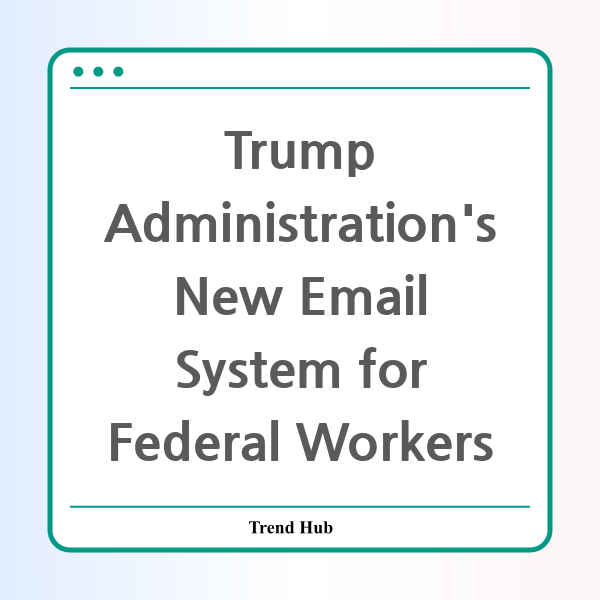* This website participates in the Amazon Affiliate Program and earns from qualifying purchases.

Imagine waking up to an email that seems suspicious, generated from an unfamiliar source that claims to be a direct communication from your government. This scenario unfolded recently for many federal employees when the Trump administration initiated a testing phase for a new communication capability from the Office of Personnel Management (OPM). But what does this mean for the approximately 2.3 million federal workers across the nation?
The OPM's new system aims to send mass emails to all federal employees from a single, trusted email address. This capability is designed to streamline communication, allowing quick updates and critical information to reach all workers promptly. However, the rollout has not been without its confusion and skepticism, leading many recipients to question the legitimacy of these messages.
Initially, the email triggered alarm bells among employees who believed it might be a phishing attempt. Reports indicated that many employees flagged the email as spam. Concerns were exacerbated by the content of the email itself, which included a directive to respond with a simple "YES"—prompting comparisons to dystopian themes, akin to George Orwell's "1984." In a time when trust in government communication is paramount, such a response felt troubling to many.
According to OPM, the initiative aligns with broader government modernization goals and takes advantage of new technologies. The administration aims to increase efficiency while cutting down on wasted communication channels. However, the timing of the rollout, coinciding with notable personnel shifts and announcements from the administration, has led to heightened anxiety among the federal workforce.
Despite these hesitations, it seems that the intention behind OPM's email system is to enhance direct communication between the government and its employees. Particularly in an era marked by rapid changes in policies and leadership, the ability to disseminate information quickly is beneficial. Yet, the confusion surrounding the pilot test points towards a need for better communication strategies within federal agencies.
To add to the rollout's complications, employees have reported receiving conflicting messages from their respective agencies regarding the legitimacy of the email. Some were advised to utilize the agency's phishing tools for suspicious emails, creating further uncertainty in the minds of those tasked with responding.
While OPM officials confirmed that the test emails originated from a trusted source, the initial reactions highlight an essential lesson for government communications: clarity and transparency are critical, especially in a bureaucratic landscape where trust is often fragile. It is imperative for government officials to ensure that workers feel secure in their communications and that they understand the purpose of new systems.
This incident begs the question: how can federal agencies improve communication strategies in a way that builds trust rather than erodes it? Perhaps moving forward, there should be a comprehensive engagement strategy that includes training for employees on new systems and protocols, ensuring that all staff are informed about changes before they occur.
As the government seeks innovative ways to modernize operations under this new framework, it must also prioritize the human element of communication. The goal should be not only to relay information but also to foster a culture of trust and collaboration within the federal workforce. Only time will tell how this initiative will evolve, but for now, it serves as a critical reminder of the importance of effective communication in any organization, especially one as vast and complex as the federal government.
In conclusion, while the new email initiative could represent a significant step towards improving communication among federal employees, the rollout has illustrated the challenges inherent in implementing new technologies in organizational contexts. By prioritizing clarity, transparency, and training, the administration can help mitigate confusion and enhance trust in federal communications moving forward.
* This website participates in the Amazon Affiliate Program and earns from qualifying purchases.